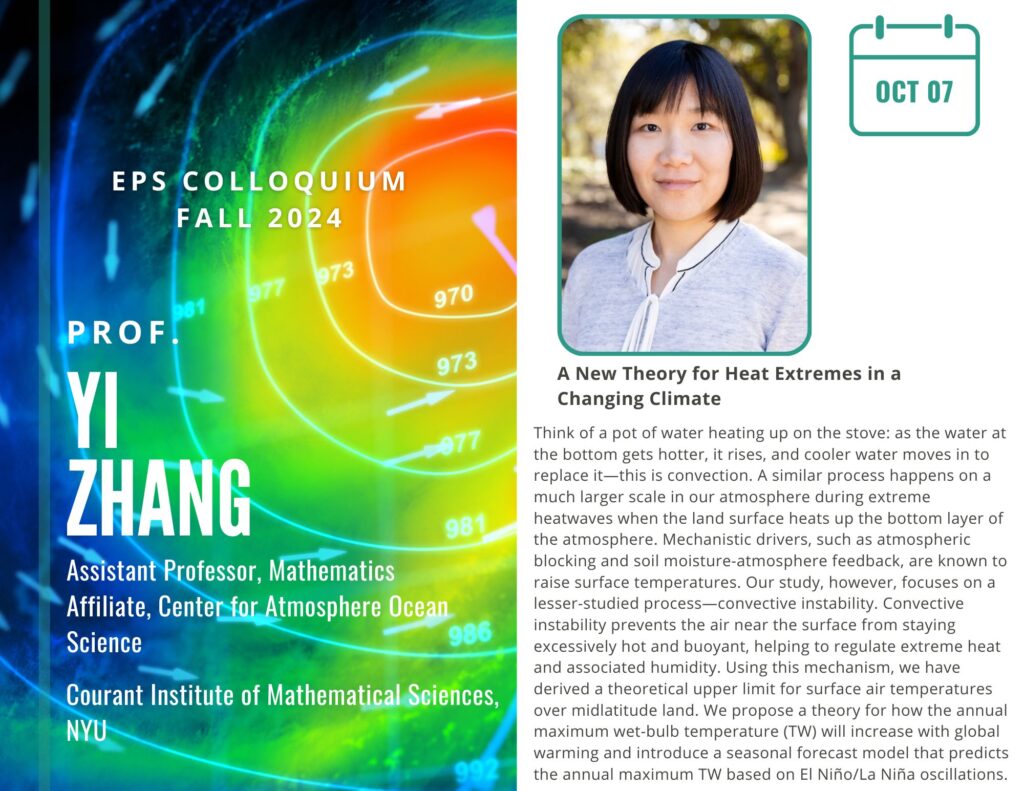EPS Colloquium – Yi Zhang, NYU
A New Theory for Heat Extremes in a Changing Climate
Think of a pot of water heating up on the stove: as the water at the bottom gets hotter, it rises, and cooler water moves in to replace it—this is convection. A similar process happens on a much larger scale in our atmosphere during extreme heatwaves when the land surface heats up the bottom layer of the atmosphere. Recent heatwaves have pushed temperatures far beyond what we’ve witnessed before, challenging our physical understanding of such extremes. Mechanistic drivers, such as atmospheric blocking and soil moisture-atmosphere feedback, are known to raise surface temperatures. Our study, however, focuses on a lesser-studied process—convective instability. Much like the boiling water example, convective instability prevents the air near the surface from staying excessively hot and buoyant, helping to regulate extreme heat and associated humidity.
Using this mechanism, we have derived a theoretical upper limit for surface air temperatures over midlatitude land, which helps to explain some of the most extreme heatwaves, including the 2021 Pacific Northwest event, as well as the warming trends in annual maximum temperatures. We also explore wet-bulb temperature (TW), a measure that combines heat and humidity to assess heat stress, particularly in tropical regions where humid heat poses a significant risk. We propose a theory for how the annual maximum TW will increase with global warming and introduce a seasonal forecast model that predicts the annual maximum TW based on El Niño/La Niña oscillations. The same theory also bears the promise of inferring extreme heat stress in paleoclimate from sea surface temperature proxies.
To be added to the EPS colloquium mailing list, please contact Caroline Carr at carolinecarr@fas.harvard.edu.

Yi Zhang is an Assistant Professor at the Courant Institute of Mathematical Sciences, New York University. Yi is interested in atmospheric dynamics and the interaction between dynamics, thermodynamics, and radiative transfer.

